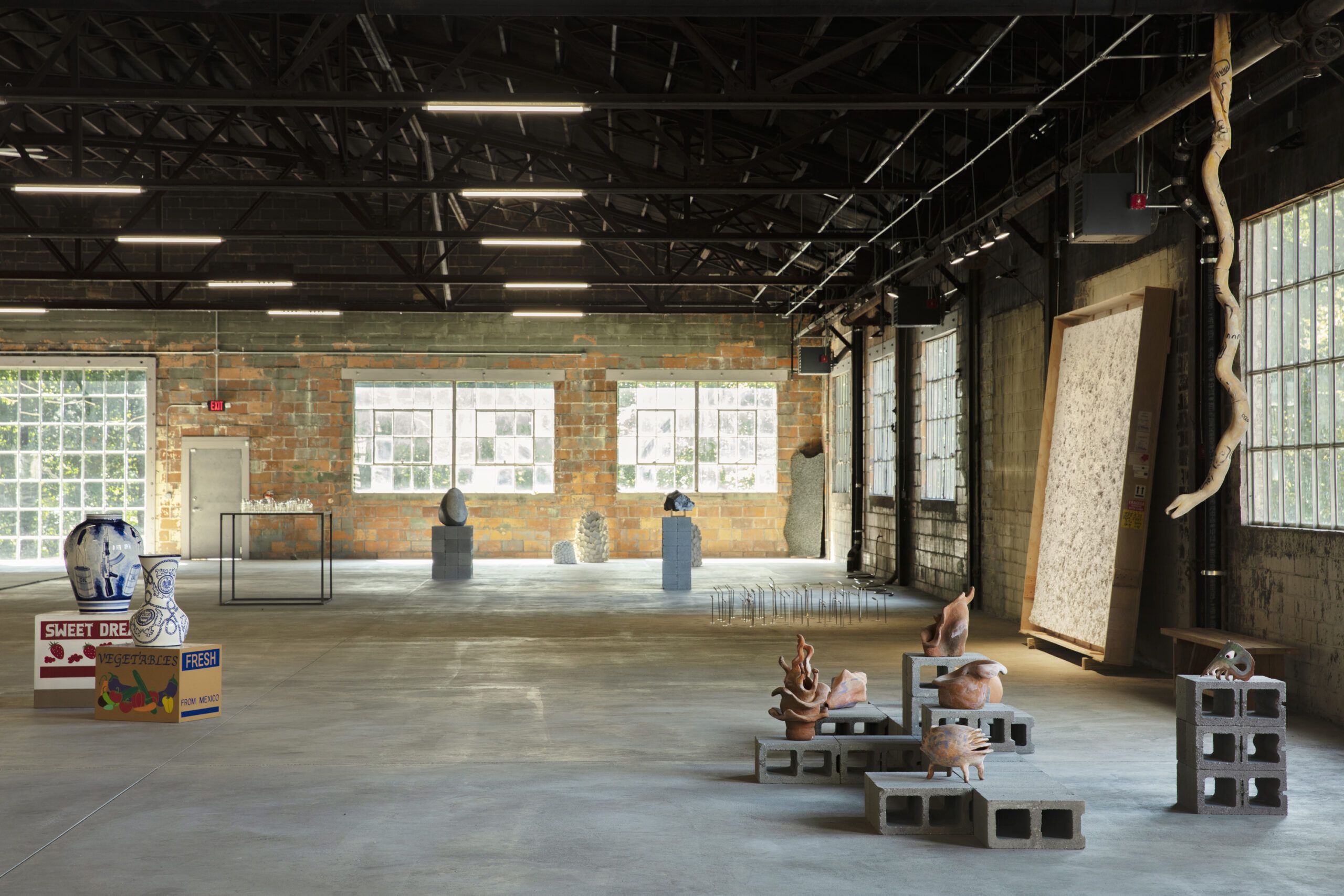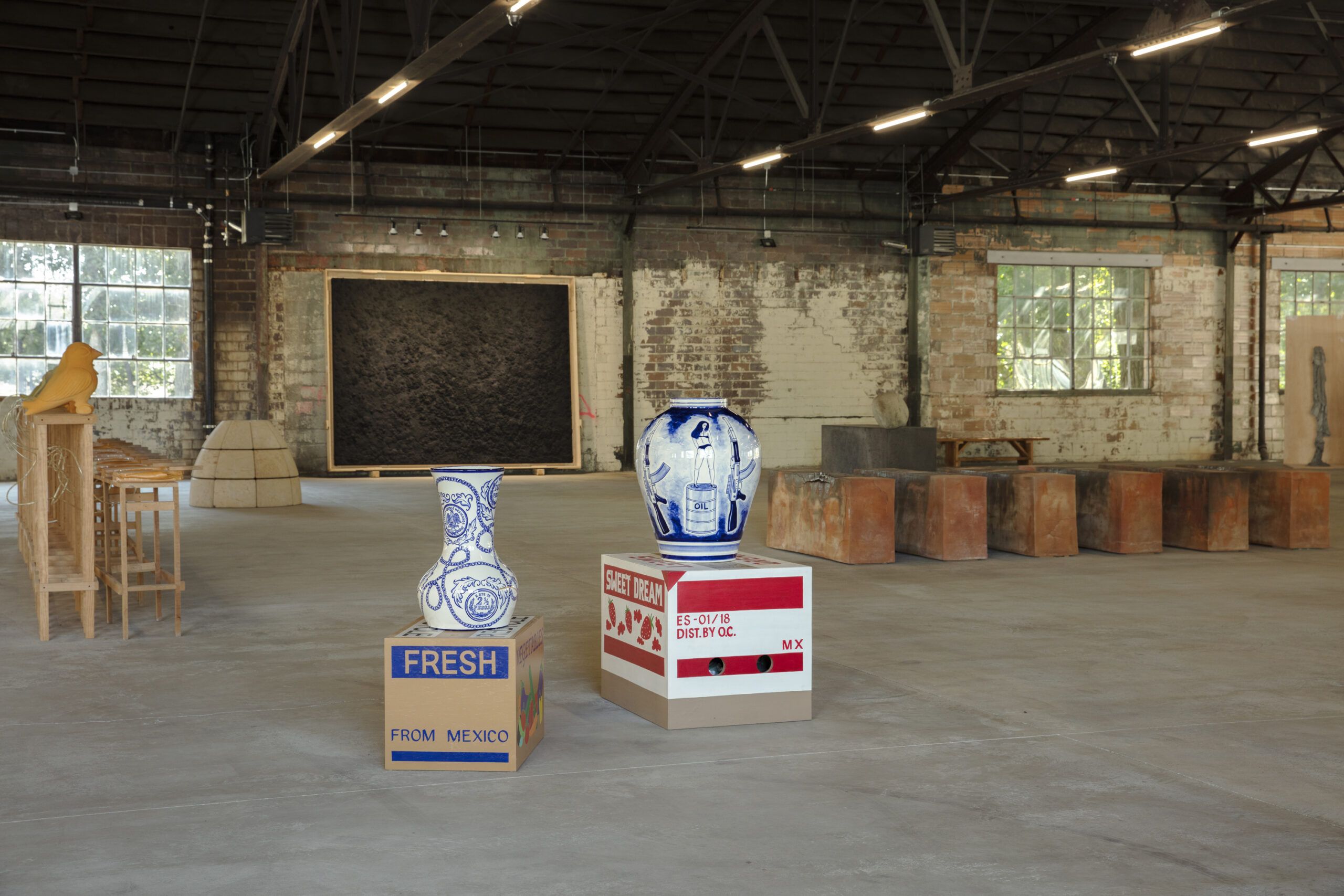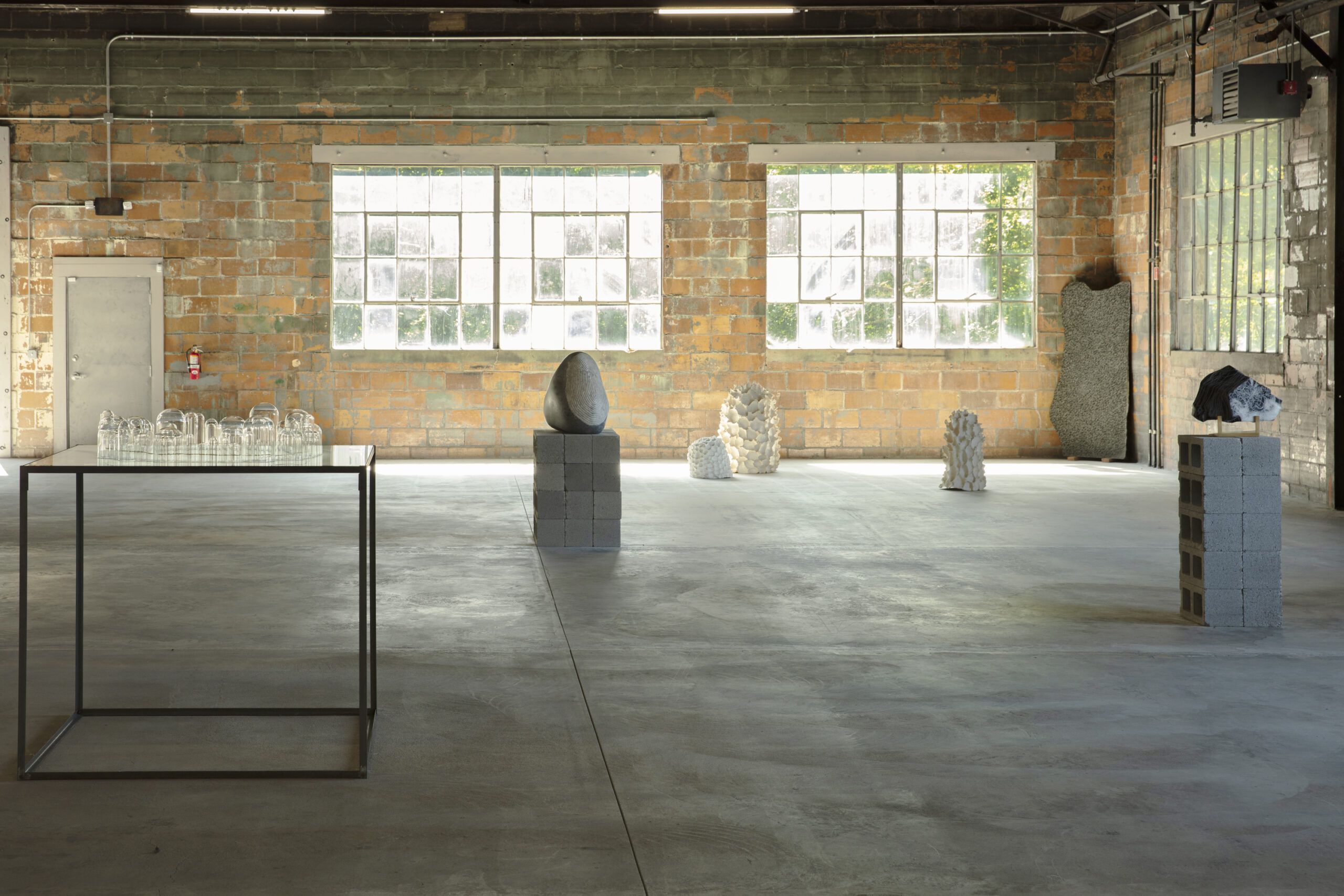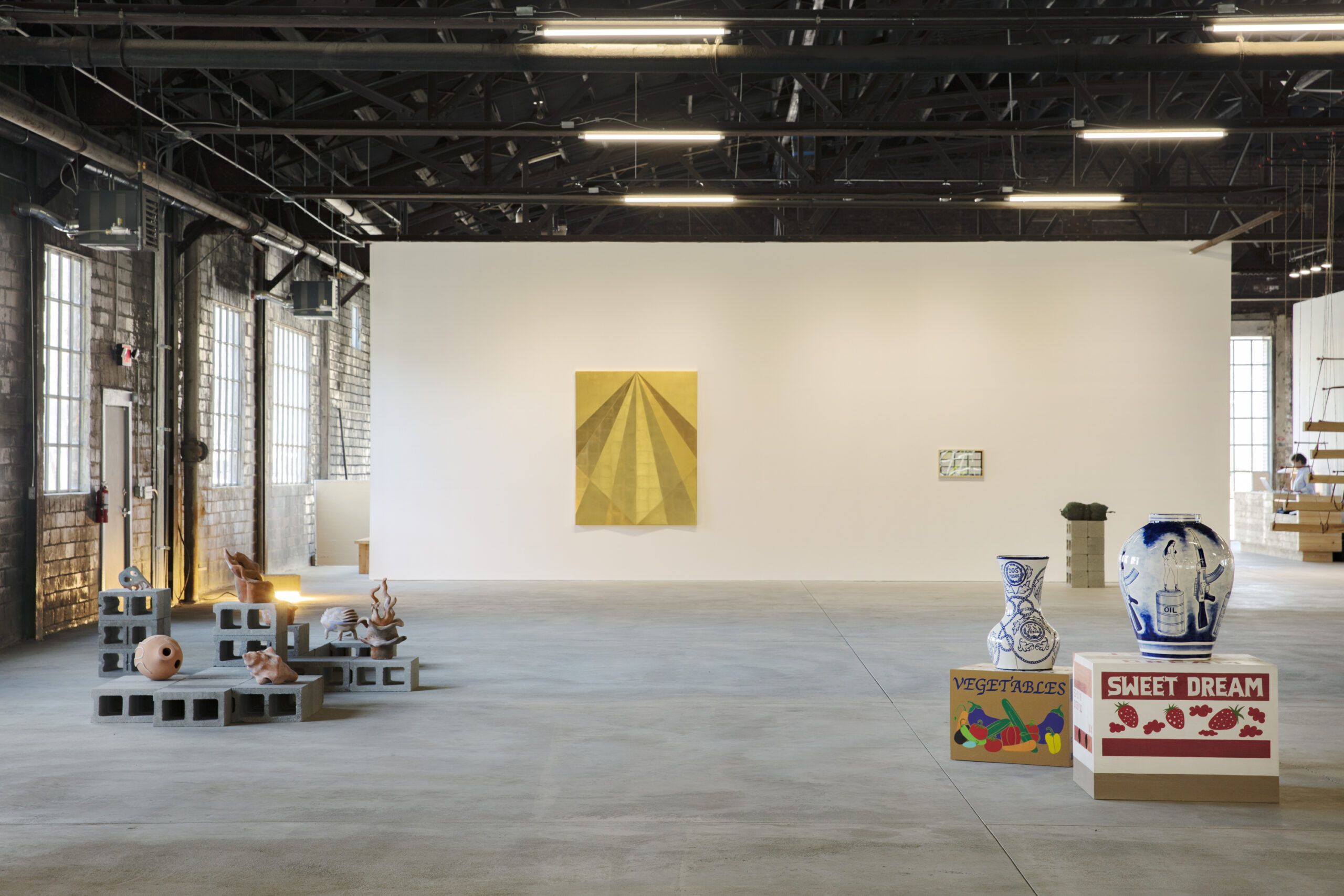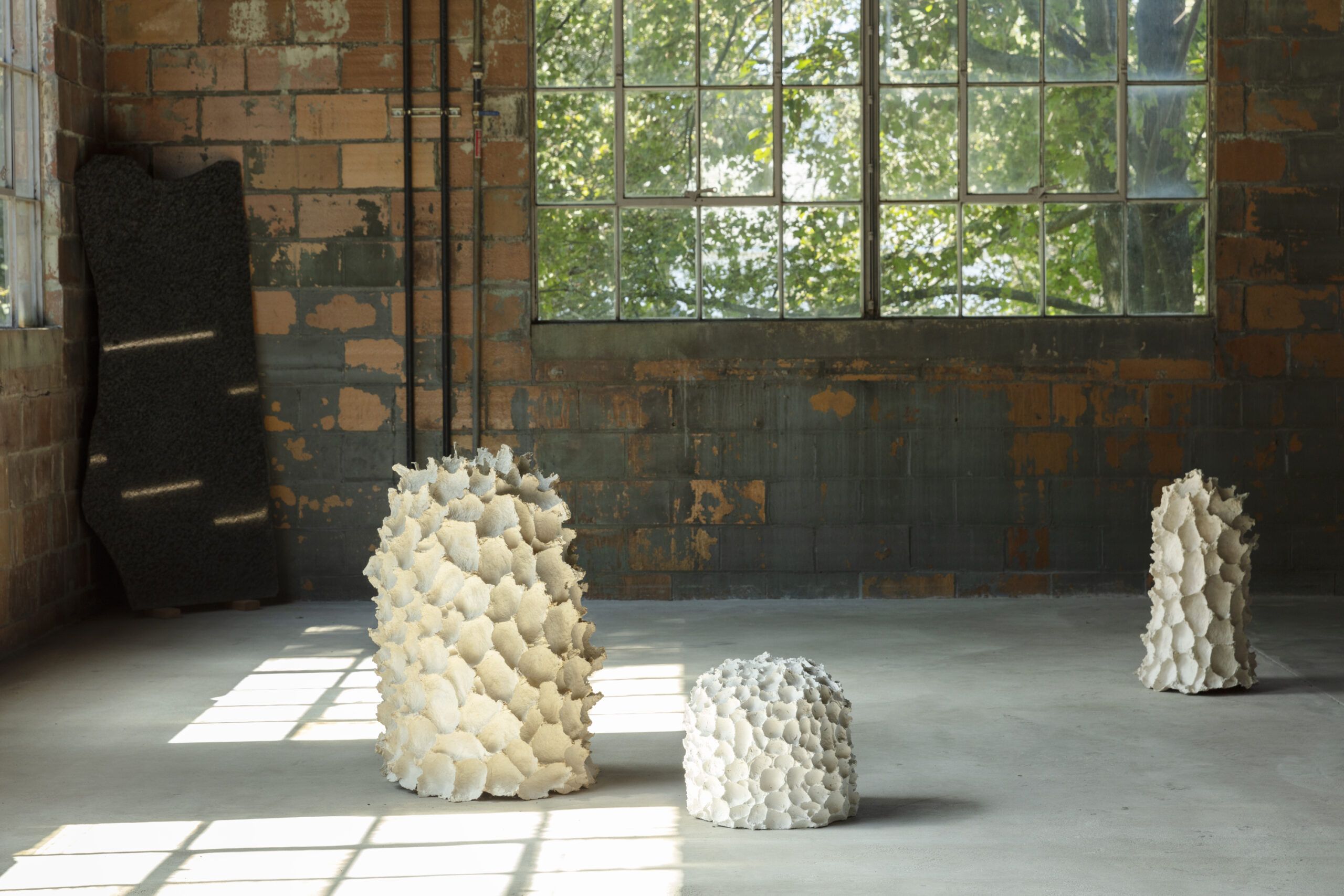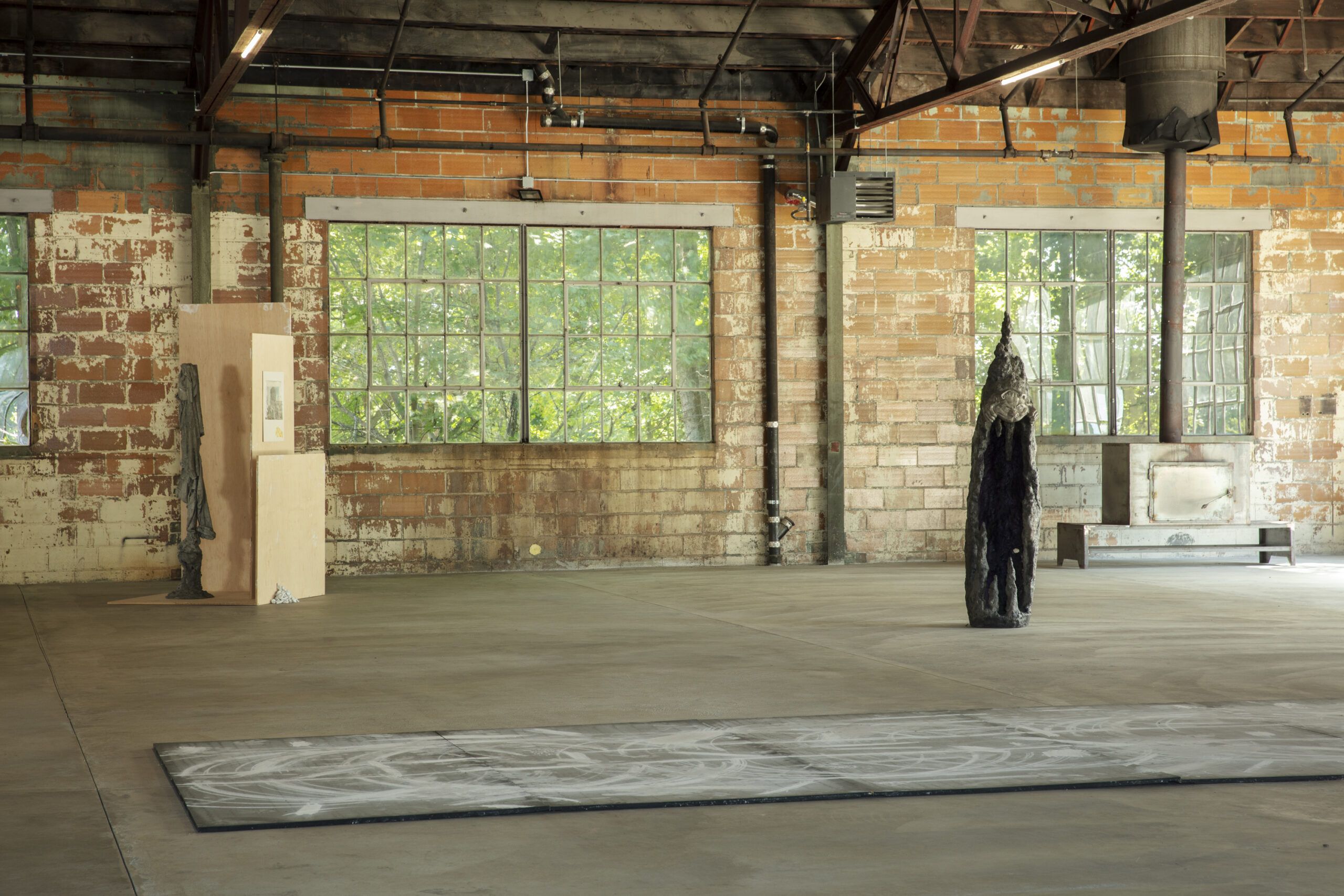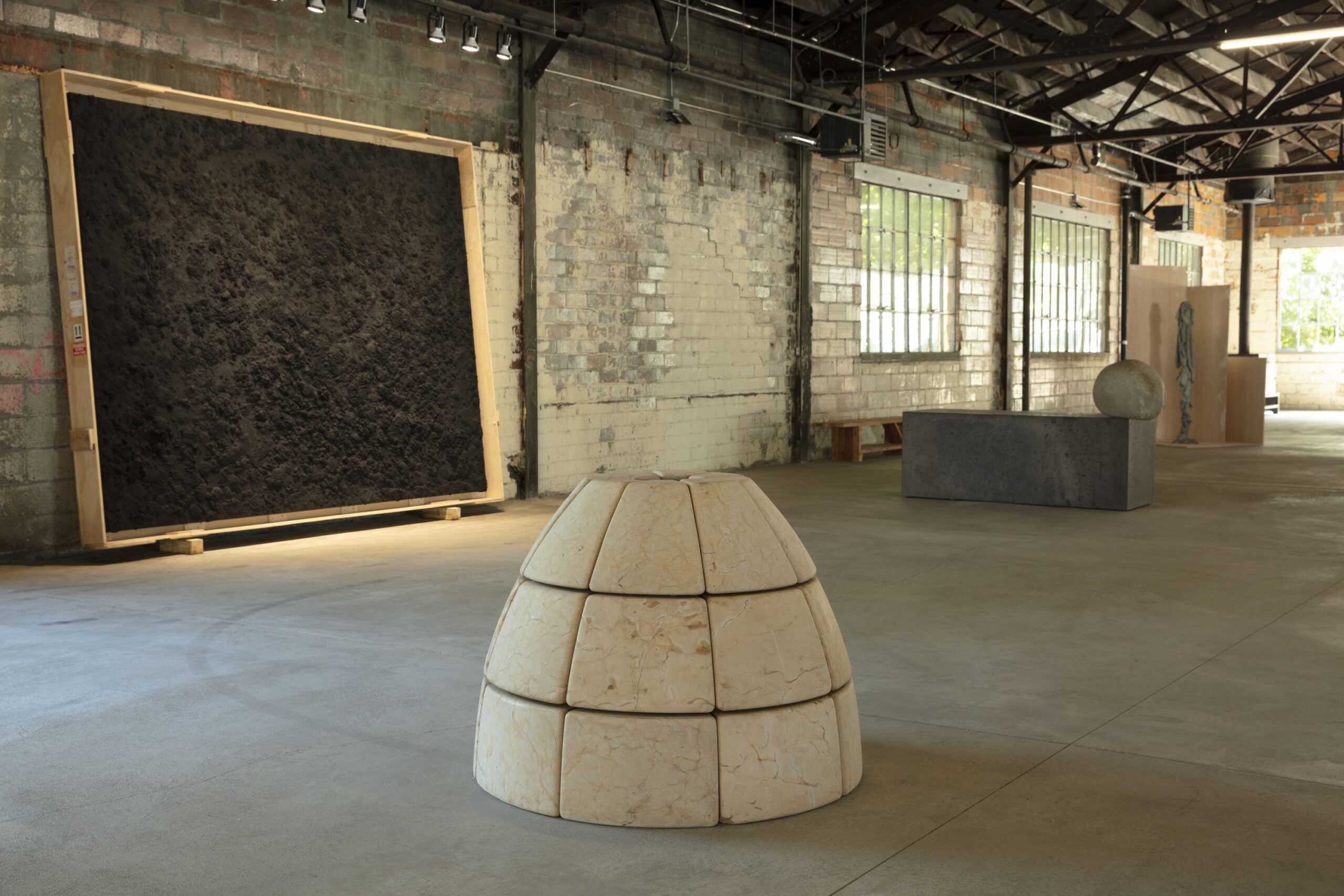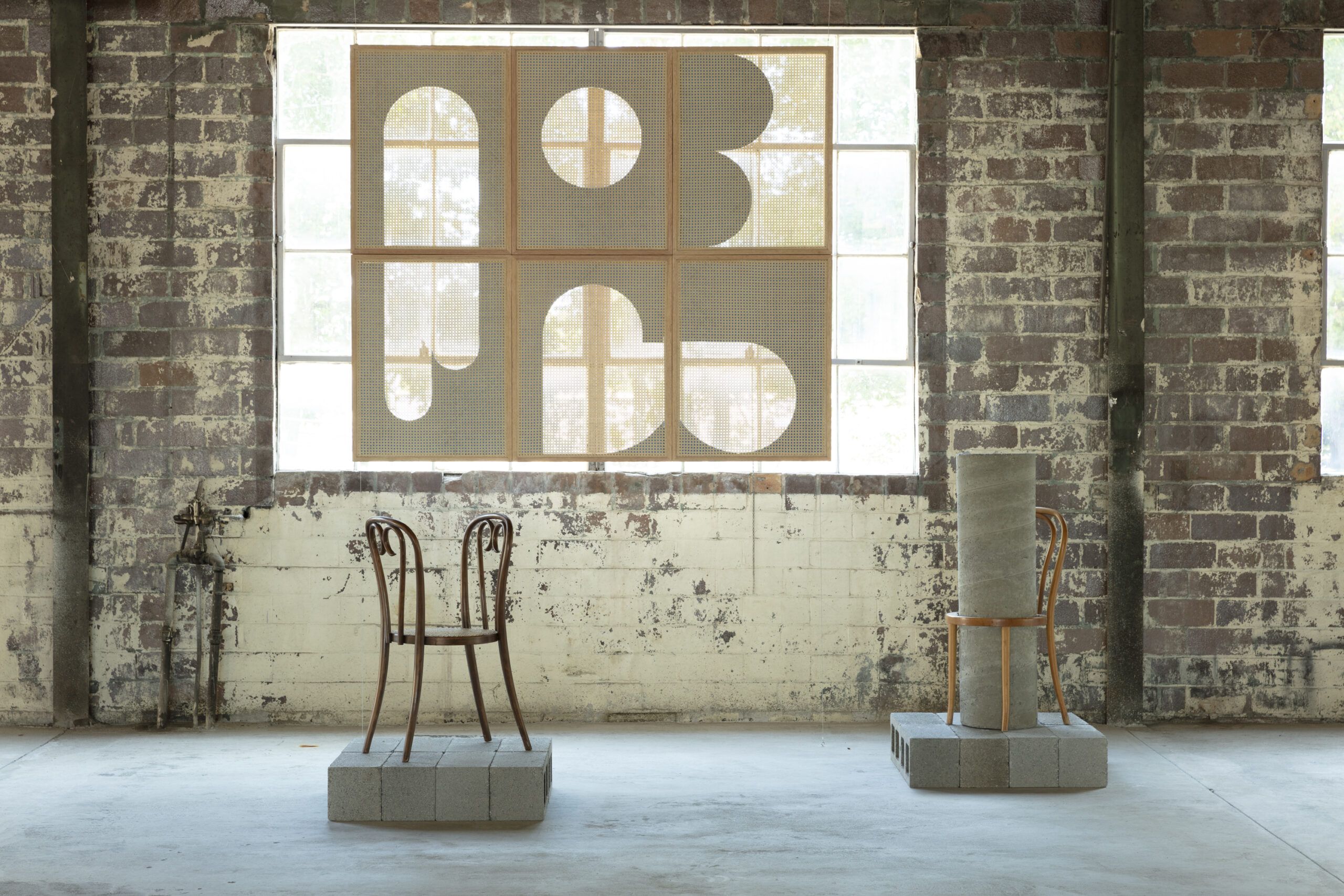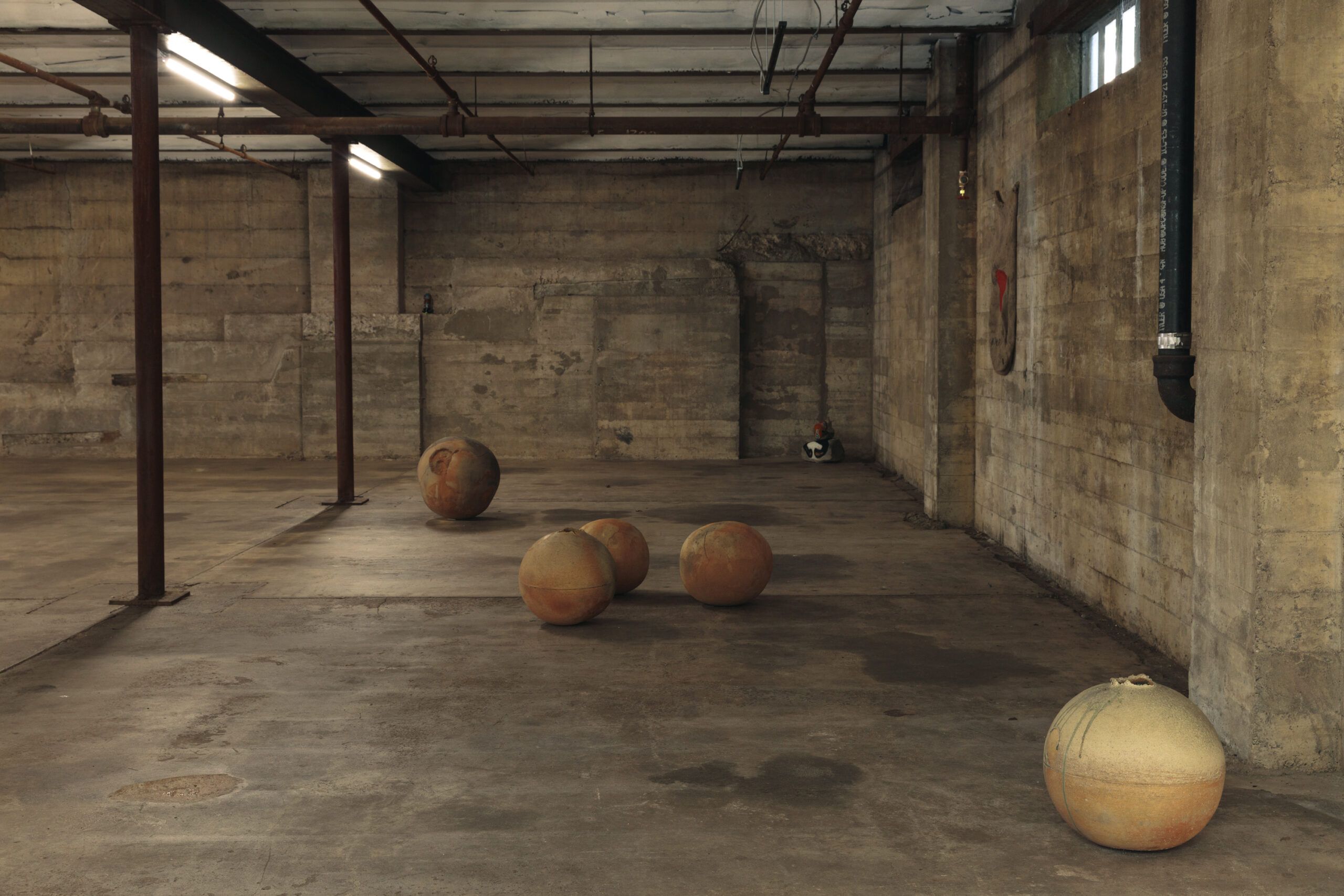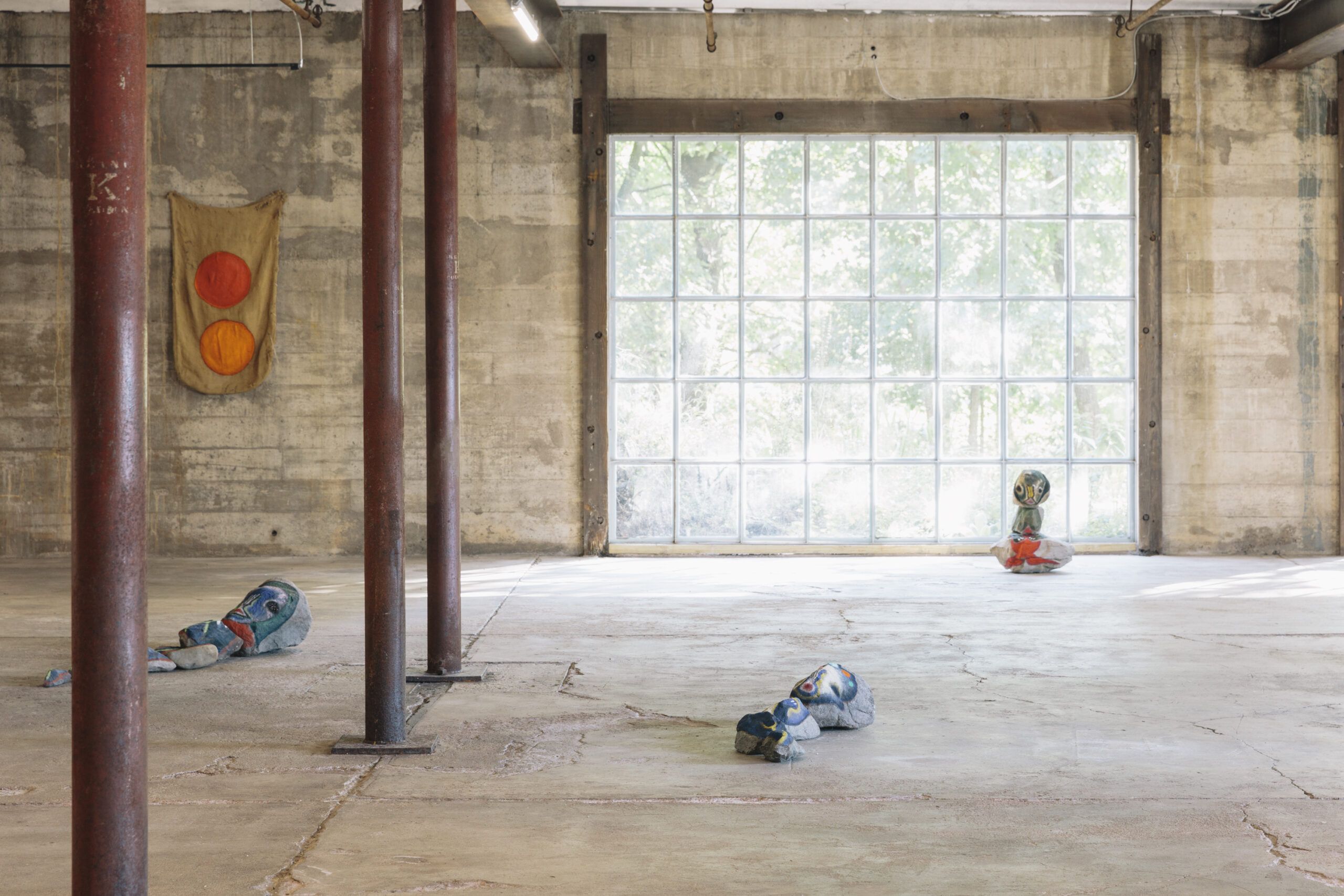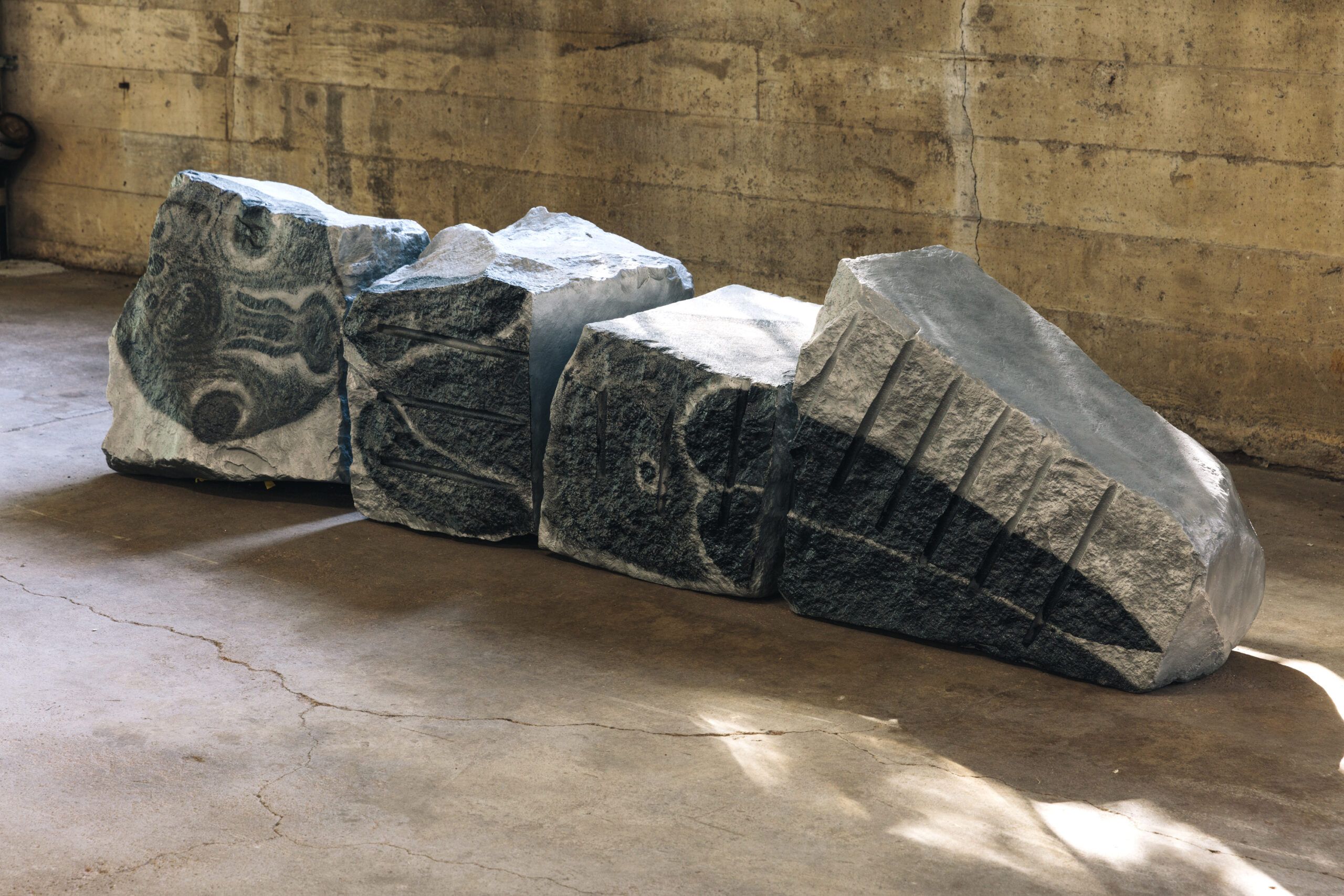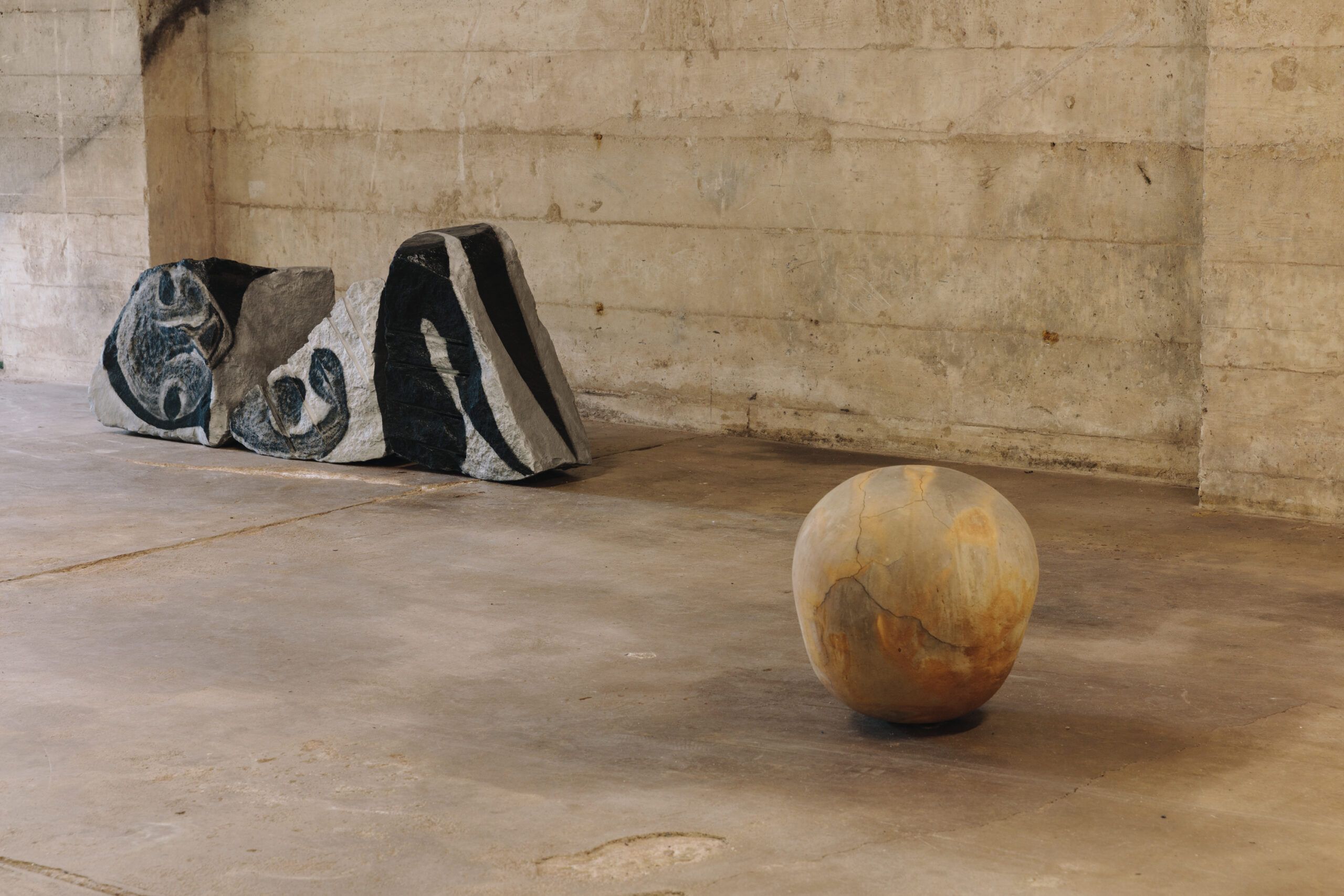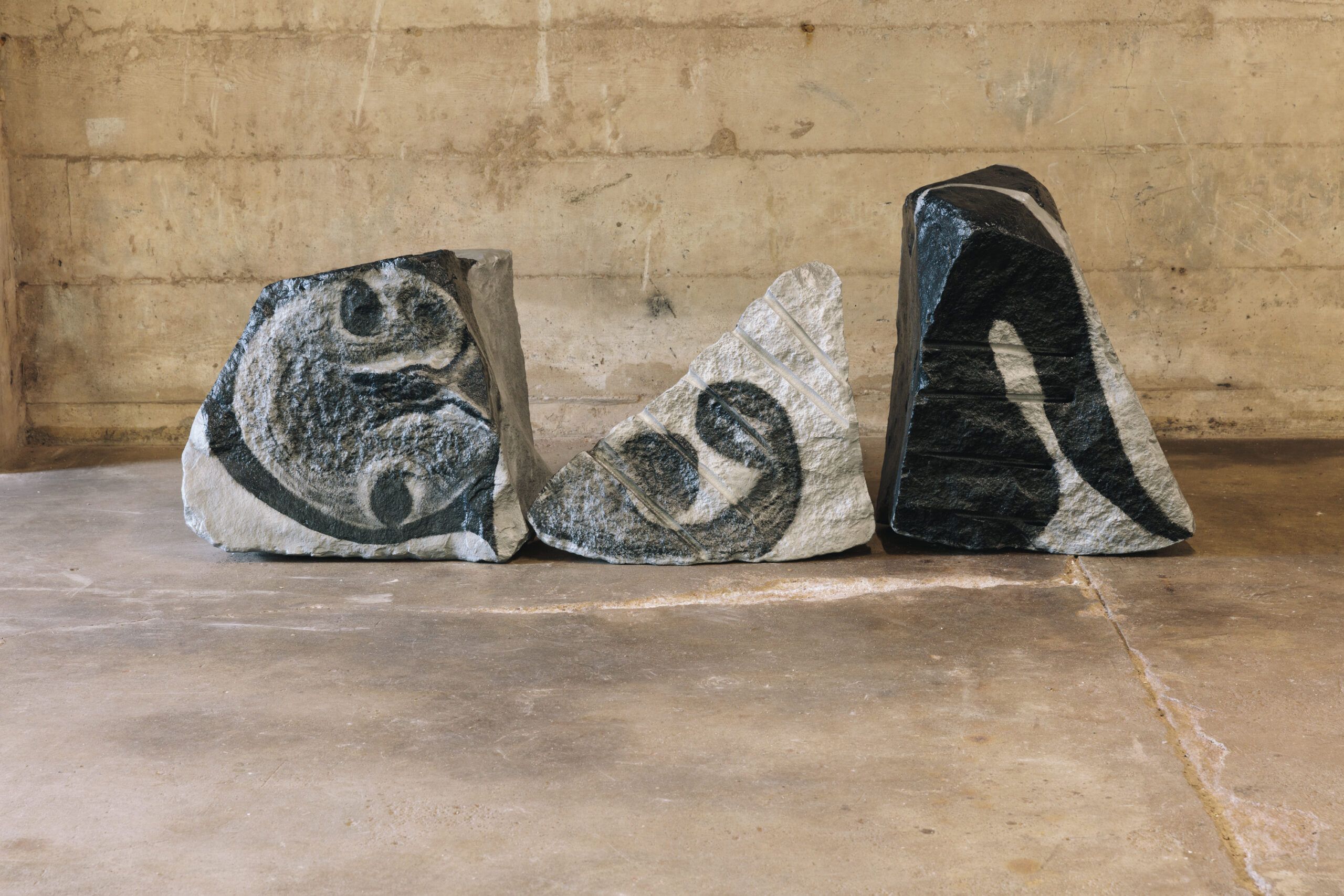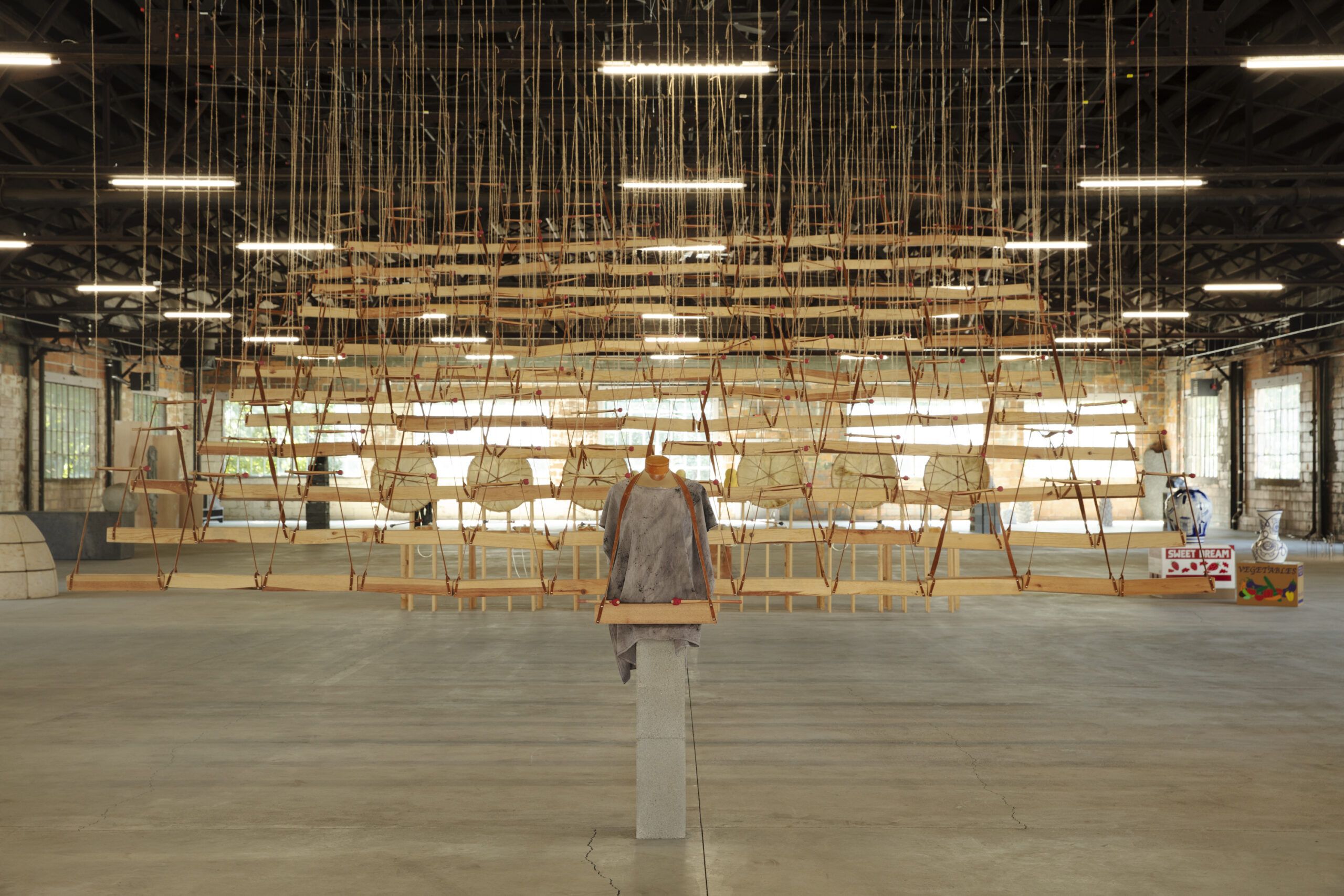
ASSEMBLY 1: UNSTORED
This space was originally a Buick dealership. Its vastness was part of a strategy for selling eighteen-foot-long Roadmaster Rivieras at a time when the interstate was synonymous with the American dream. The trick today is how to repurpose that structural optimism—the sense of limitless possibility—to transcend the malevolent presumptions that accompanied manifest destiny. Our hope for Assembly is to generate a different kind of aspiration by expanding civic space in the service of the community.
In this first, year-long coming together, the abundance of space here is applied to countering one of the art world’s worst secrets. There is an enormous glut of unused artworks out there stuck in suspended animation. Assembly 1: Unstored was conceived as an alternative—albeit still a temporary one—to warehousing, which is just about the worst fate that can befall an artwork. Is a sculpture reduced to an unrealizable value proposition, with no prospect of a transformable viewer, even an artwork? That is a question that museums mostly can’t answer, because it is a problem they were unintentionally designed to perpetuate.
To make the exhibition we asked a group of artists from Mexico and based in Mexico, as well as a couple of other friends, if they would lend us something beloved that was languishing in limbo. Initially there was no thematic intent beyond setting some great things free for a while. “Give us your retired, your ignored, your stashed-away masses yearning to be seen…,” or something like that. But as tends to happen, even in the absence of active design, when these wonderful, complex things get together, meaning has an opportunity to assemble itself.
Of course a short-term furlow for a handful of works can’t fix anything. But it is satisfying to give these articulate arguments for empathy, in the form of objects that don’t really want to be products, a glimpse of sunlight and the chance to stretch their legs.
–Dakin Hart
Thank you to the artists and galleries who provided work and support to make this exhibition possible, and especially to Alberto Rios de la Rosa.
CONTEMPORARY SCULPTURE FROM MEXICO
Main Gallery
As a selection of contemporary sculpture from Mexico this is too limited to be called a survey. But it does reflect some measure of the diversity of approaches to object making and social engagement that have made Mexico a global hub of artistic and material culture production.
Adeline de Monseignat
Adrian S. Bara
Alejandro Almanza Pereda
Ale de la Puente
Bosco Sodi
Cristóbal Gracia
Eduardo Sarabia
Gabriela Galván
Galia Eibenschutz
Gonzalo Lebrija
Héctor Zamora
Jose Dávila
Lorena Ancona
Mario García Torres
Mario Navarro
Paula Cortazar
Tania Candiani
Yolanda Ceballos
UGO RONDINONE: STONE MASKS
Focus Gallery
These stone masks are the latest in a line of expressive heads and faces that Ugo Rondinone (b. 1964, Switzerland) has made over the last two decades. The approximation of human recognition they achieve is stunning for its formal economy and existential scope. Masks have long served all over the world in many different cultural contexts as symbolic metaphors for the human condition. Because stone examples are hard to fashion and can seem comparatively less expressive, variations of “face of stone” became a metaphor for the absence of emotion, and by extension humanity. Rondinone turns this notion on its head by coaxing not just faces from these rocks—all about the size of a human head—but ones with personality and individuality.
Fragile, timorous, and wry these are characters not signs, covering a more nuanced range of emotions than that suggested by the faces of tragedy and comedy for example used as the calling card of classical Greek theater. That this the comparison is intentional is clear from the absurdist, pseudo-antipodal titles Rondinone has given his masks: the false + the true, the love + the hate, the here + the there, the stand + the sit. In Rondinone’s stony version of Manicheism (dualistic thinking), the “+” is both a sign of addition and a conjunction. So rather than offer stark oppositions, Rondinone’s pairs create spectrums of gray.
Essentially assisted readymades (found sculpture given a boost by its finder), the most important act of artistry in the making of the masks—the thing that makes them sculpture—was Rondinone’s realization that if he selected the right rocks, it would take almost nothing to turn them into faces. The introduction of two drill holes for eyes is all that was required to activate them: to link stone and flesh, the timelessness of our spirits with the fleetingness of our bodies. (Close scrutiny does reveal some subtle chisel work around the eyes, for added pathos.)
Whatever humanity may become: genetically altered, part machine, long-lived, incorporeal, we will always have been a Stone Age people. Staring into the masks’ eyes—looking for the souls inside—we find ourselves getting to know the rocks. Their faces: scarred, stained, asymmetric and unique, are as full of lived experience as our own.
IZUMI KATO, SHIRO TSUJIMURA, BOSCO SODI
Basement Gallery
Sodi´s “pre-industrial wabi minimalist” paintings and sculptures presented alongside works by two Japanese artists whose work influences his own
